利用者の声
利用者の声
ここでは本所における共同研究につきまして、研究部共同利用委員会の委員の先生方や、共同利用者の方々から頂いたご意見やご感想を掲載しております。
2024
High Magnetic Field Studies of Antiferromagnetic Material Properties
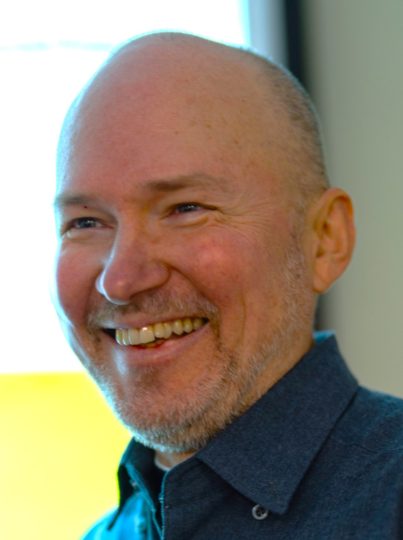
Oleksandr Prokhnenko
Helmholtz-Zentrum Berlin für Materialien und Energie GmbH, Germany, Instrument Scientist
This and last year my projects are focused on spin chain quantum magnet system, also known as brochantite. This material orders antiferromagnetically at low temperatures and possesses quite rare for an antiferromagnet combination of relatively simple magnetic order and complex spiral spin dynamics. Here, our aim is to investigate the details of high-field magnetic phases using nuclear magnetic resonance (NMR) and map out the magnetic phase diagram using heat capacity measurements (HC) in high fields.
The performance of the experimental facility was excellent. We had no major technical issues which allowed us to complete fully the HC experimental program and the NMR program for the magnetic field applied along one crystallographic direction. For the former we mapped out the whole phase diagram up to 24 T applied along main as well as arbitrary crystallographic directions. For the latter we obtained Cu-NMR spectra at 4.25 and 7.5 T corresponding to the low- and high-field phases of this material along one of the crystallographic axis.
I find the GIMRT program very useful and effective in reaching it goals – connecting scientists and making them collaborating using IMR and overall Japanese experimental infrastructure. GIMRT creates ideal conditions for collaboration with IMR-based, and not-only, Japanese scientists. Moreover, for international researches it provides access to experimental infrastructure in Japan which is of high quality and often unique. Both these factors made me applying for a GIMRT project now and in the past. It is not the first time I am using it, and I have always got a high level of support provided by my hosts and local contacts ranging from scientific discussion and running the experiments to practical ones, such as how to get somewhere, what to see or to eat. Of course, when you know the GIMRT program, it is relatively straightforward to apply for a project. Perhaps, for people who want to use it for the first time, it is not the case. I imagine it would be helpful to make more advertisements abroad with details about the program. Otherwise, the GIMRT program is also perfect for young scientists helping to expand their horizons and find new collaborators and may be even friends for future career.
I would like to thank my hosts, local contacts and all the involved people from the GIMRT office for doing great job. Scientific collaboration and exchange are very important for success in modern science. Thank you for making it happen and see you next time.
*Prokhnenko氏のインタビューは、KINKN Plus No.3にも掲載されました。
International evaluation report for Global Institute for Materials Research Tohoku: GIMRT
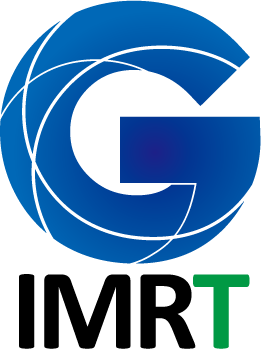
GIMRT has certified as one of 6 International Joint Usage/Research Center in November 2018 and the international advisory and steering committee was asked by IMR director to provide an evaluation report for the activity in FY2021-2023 based on five key questions as below.
Summary
1. GIMRT offers highly effective opportunity for international collaborations through a portfolio
of well-thought programs and contribute to the formation of an international collaborative research hub in materials science.
2. GIMRT organizes various meetings to generate new ideas and possible collaborations. GIMRT provides domestic and international users with access to unique facilities in IMR.
3. GIMRT offers a unique platform to cover several sub-areas of ideas to be explored under one umbrella. GIMRT is unique in providing not only a specific instrument but a wide range of experimental facilities aimed at solving scientific ideas of researchers. The success of GIMRT is due to the high level of scientific expertise of IMR staff, who help and support the researchers.
4. The number and quality of publications resulting from the collaborative research within the GMIRT programs is quite impressive.
5. There are several excellent GIMRT programs dedicated to young researchers.
6. GIMRT offers a user-friendly application process and a fast and efficient review process. GIMRT managers are also quick to communicate various matters to researchers.
Recommendations
1. The presence and the activity of GIMRT should be spread and announced more to international community.
2. It would be good if there is an initiative to more actively encourage new collaborators and young researchers to join the program.
3. It is desired that the budget for the international collaboration and support staff will be increased.
4. It is desired to further increase the active support for young researchers. It is a good idea for IMR to offer Dual Degree Doctorate (ODD), which can enhance the collaboration with scientists from abroad.
5. It is important to seek the views of young researchers about the issues of GIMRT to further improve the program.
6. It is useful to link the global activities of GIMRT with those of other institutes for materials science, for example, Institute for Molecular Science and Institute for Solid State Physics.
Request
1. Prepare the comparison table to show the differences from other international programs.
Names of committee member and affiliations
Bella Lake, Helmholtz-Zentrum Berlin
Ratnamala Chatterjee, Indian Institute of Technology Dehli
Steven Van Dyck, Belgian Nuclear Research Centre
Ilya Sheikin, Laboratoire National des Champs Magnétiques Intenses
Seung-Zeon Han, Korea Institute of Materials Science
Roser Valentí, Goethe University Frankfurt/Main
Masaaki Matsuda, Oak Ridge National Laboratory
Kwang-Yong Choi, Sungkyunkwan University
J. Javier Campo Ruiz, University of Zaragoza
Yoshiki Nakanishi, Iwate University
Hatsumi Mori, The University of Tokyo
Masakazu Tane, Osaka Metropolitan University
Takuro Katsufuji, Waseda University
Takahiro Hanyu, Research Institute of Electrical Communication Tohoku University Tomoyuki Akutagawa, Institute of Multidisciplinary Research for Advanced Materials, Tohoku University
Shinichi Orimo, Advanced Institute for Materials Research, Tohoku University
2023
Opportunities for spectroscopy measurements and deep discussion in Sapienza
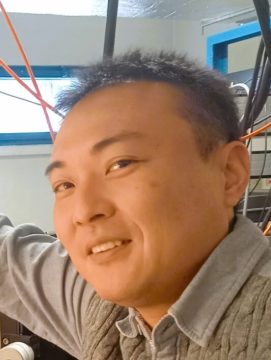
Yoshikazu Mizuguchi
Tokyo Metropolitan University, Japan, Associate Professor
Prof. Saini’s group of Sapienza University of Rome, Italy, is one of our strong collaborators. Since the early stage of our collaboration, I experienced stay in Sapienza several times. However, after Covid-19 situation, I did not have a chance for staying in Sapienza, and this time was the first middle-period (three weeks) stay in Sapienza after the Covid-19.
In the Prof. Saini’s group, we can measure photoelectron spectroscopy on various samples. We measured some systems of transition-metal zirconide new superconductors. The systematic measurements on (Fe,Ni)Zr2 have been completed, and the spectroscopy could confirm the systematic solution of Ni and Fe, which induces bulk superconductivity. We have submitted a co-authored paper on this material. In addition to the experiments, the most important experience in this stay was deep discussion with Sapienza members including students and researchers. Since we have been collaborating on various materials, discussion on many topics has been done. In 2024, we are going to hold a workshop on disordered superconductors in our university and invite Prof. Saini and the group members where further networking could be expected. The period of the stay was Christmas month, I could see the change in Roman street every day; a big Christmas tree was under construction in Sapienza, and the light was turned on before my leave.
This stay was partly supported by GIMRT (Type-O), and I would like to thank all staffs of IMR who kindly supported me for this stay.
2021
International evaluation report for Global Institute for Materials Research Tohoku: GIMRT

GIMRT has certified as one of 6 International Joint Usage/Research Center in November 2018 and the international advisory and steering committee was asked by IMR director to provide an
evaluation report for the activity in FY2018-2020 based on five key questions as below.
Summary
The broad scope and varieties of the program of GIMRT contribute to collaboration and the researcher’s needs. The bridge proposal scheme is effective and useful for international collaboration. There is a large percentage of international proposals and collaborations with high-profile and highly coordinated researches across the disciplines.
1. The numbers of the proposal and international fraction show the open access. The unique facilities and activities are recognized and are open for easy access. The flexibility of operation and various efforts under the covid pandemic support community.
2. The publication record, international joint papers, and high-profile outputs show the usefulness of the GIMRT program to produce significant scientific and technical outputs.
3. GIMRT program supported the research and the bi-directional international exchange of the young researchers, as shown by the fraction of the supported participants.
4. The quality of the GIMRT program is at a high international level. The program’s scheme, the availability of a broad range of support for young researchers, is the GIMRT program’s uniqueness.
5. We conclude that this program has been successful for international collaboration and recommend a continuation for the next term.
Recommendation for further improvement
1. The GIMRT program could be advertised more extensively and the communication about the possibilities for external users can be improved.
2. We recommend that the presence and the activity of GIMRT should be spread and announced more to both domestic and international communities using SNS.
3. Analyze the content of the publications and the contribution of GIMRT. Monitor the fraction of the international joint paper continuously.
4. Support for the young researcher is the unique and excellent points of the GIMRT program. Therefore, the continuation and the further improvement are strongly recommended.
On behalf of the committee
Names of committee member and affiliations
Prof. Arne Brataas, Norwegian University of Science and Technology, Norway
Prof. Yongmin Kim, Dankook University, Korea
Prof. Junichiro Kono, Rice University, USA
Prof. Jens Müller, Goethe-University Frankfurt, Germany
Prof. Somei Ohnuki, University of Science and Technology, Beijing, China
Dr. John M. Tranquada, Brookhaven National Laboratory, USA
Prof. Wei Zhang, Dalian University of Technology, China
Dr. Timothy Ziman, Institut Laue Langevin and CNRS, France
Prof. Yoshiki Nakanishi, Iwate University, Japan
Prof. Yukio Hasegawa, University of Tokyo, Japan
Prof. Hiroshi Numakura, Osaka Prefecture University, Japan
Prof. Ayako Yamamoto, Shibaura Institute of Technology, Japan
Prof. Satoshi Shioiri, RIEC, Tohoku University, Japan
Prof. Tomoyuki Akutagawa, IMRAM, Tohoku University, Japan
Prof. Shinichi Orimo, AIMR, Tohoku University, Japan
Prof. Tadashi Furuhara, IMR, Tohoku University, Japan (not involved in the evaluation)
2019
Opening new doors—new results leading to new questions
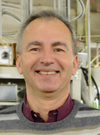
Denis Arčon
Jožef Stefan Institute, Slovenia, Professor
One of the main research topics in my group is magnetism in the presence of “spin frustration.” The target of this visit was the mixed-valence alkali sesquioxide compound Rb4O6. Rb4O6 is a unique system in its family that shows quantum magnetism, however its spin dynamics and other physical properties are not yet well understood. The purpose of the experiment at IMR was to explore the behavior of the spin dynamics of Rb4O6 at low temperatures and high magnetic fields to reveal its overall physical phenomena.
The High Field Laboratory for Superconducting Materials (HFLSM) at IMR is extremely well-known in the world as a facility that has a high level of instrumentations and offers a wide range of magnetic fields at one place. That’s an attractive point, because if it was in other laboratories, we would probably need to go around different facilities to conduct different types of experiments. At IMR, we have measured magnetic phase transition in Rb4O6 under high magnetic field up to 25 T—much higher than what we are able to measure at our home institution. Actually, we had various new results in this visit, but they also opened some new questions. It’s like finding a new door for next stage in the room of “25 T” we entered this time.
I’m also grateful for the GIMRT program, which allowed me to bring my student with me to perform experiments here. Coming to IMR with my student made it possible for us to work in shifts so we can experiment efficiently and maximize our time during our stay. It was also very important for the student to experience and see how the Japanese scientists carry out their research, and create new networks that may lead to more collaboration in the future. We enjoyed our stay at IMR, and we look forward to working together again soon.
GIMRT: Opportunities for optimal experimental conditions and new collaborations

Javier Campo
University of Zaragoza, Spain, Professor
I experimented at IMR for 10 days in order to conduct a collaborative research with Osaka Prefecture University (OPU). I am collaborating with Prof. Yuko Hosokoshi’s group at OPU from long time ago in the study of new magnets done without any metallic ion. Even several years ago, we supervised together a student who obtained a Dual Degree Doctorate. This research is one of the three pillars of my scientific project in Spain, which is the study of magnetic chirality. The other two pillars are the study of new molecular multiferroics compounds and the understanding of the effect of the thermal fluctuations and the stability of magnetic textures (solitons and skyrmions).
I have conducted joint researches with other Japanese universities for a while, but this was my first time experimenting at IMR. As my collaborative researchers said, the unique equipment at IMR provided excellent experimental conditions for us. For example, during the experiment at IMR, we used 20T-SM Magnet with a dilution refrigerator and observed low temperature physics down to 0.1 K in this purely organic magnet synthetized at OPU. In the laboratory at our home institute, we were only able to reach down to 0.3 K, so this experiment will complement the experiment we started back home.
We thank the GIMRT program, and in particular Prof. Hiroyuki Nojiri, for enabling me to bring my student to conduct experiments together. We are very fortunate to have this opportunity to come to Japan for a month, which can be very expensive for our reduced budget. Being able to come with two people instead of one allows us to optimize our time using the wonderful equipment at IMR. The GIMRT also helps to open up opportunities for new collaborations. Through working together for the past couple of weeks and exchanging scientific ideas, Dr. Takumi Kihara became interested in other materials we are familiar in my group. This kind of symbiotic relationship is very precious, and it is an added value to the program.
2018
High-field measurements for next-generation fusion magnets
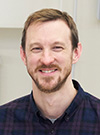
Zachary Hartwig
Massachusetts Institute of Technology, Assistant Professor
My research focuses on utilizing high-temperature superconductors (HTS) to advance the performance of high-field, large bore superconducting magnets for fusion applications. Because of the wide variability in HTS obtained from different manufacturers, as well as strong critical current dependence on magnetic field, magnetic field angle, and temperature, it is essential to be able to fully characterize small samples of HTS over the entire potential design space of fusion magnets. This is especially important for the high-field fusion magnets being designed and fabricated at MIT, where peak fields will reach up to 25T. The incredible facilities at Tohoku University IMR, principally the 25T-CSM magnet and HTS critical current characterization system, provide perhaps the only place in the world where HTS samples can be fully characterized to our stringent requirements. Our 2 week measurement campaign on the 25T-CSM was an excellent success, giving us unprecedented HTS data to guide our magnet research and development. This success was primarily due to the expertise and guidance of Professors Satoshi Awaji, Tatsu Okada, and Arnaud Badel from IMR, who were gracious and patient hosts as we ran experiments late into the night for 2 weeks (Thank you!) Our entire team enjoyed our visit very much, particularly the students who helped lead the experiments and were in Japan for the first time. We enjoyed excellent technical discussion over lunch, and dinner, and we are eager to return to continue measurements and pursuing research opportunities with the scientists that we met during our time at IMR.




